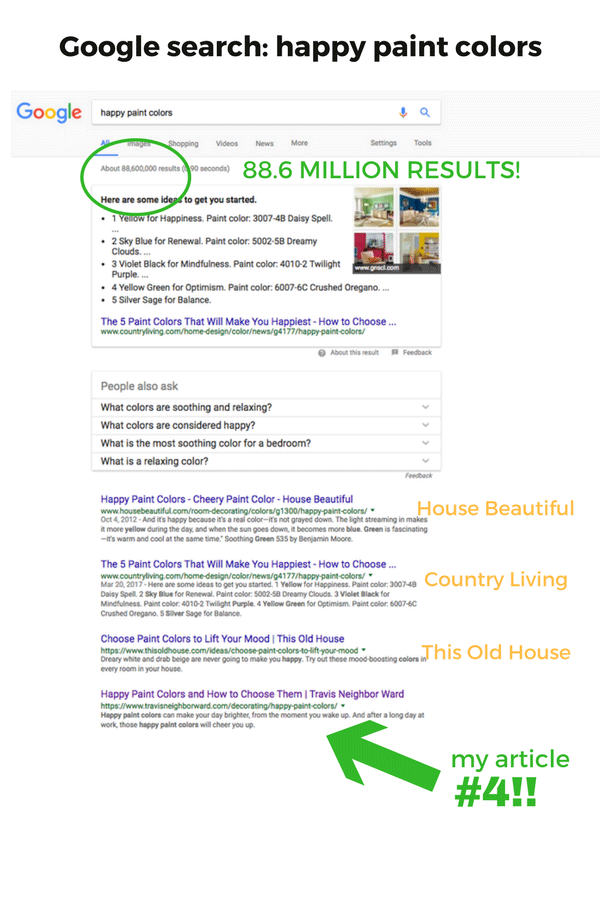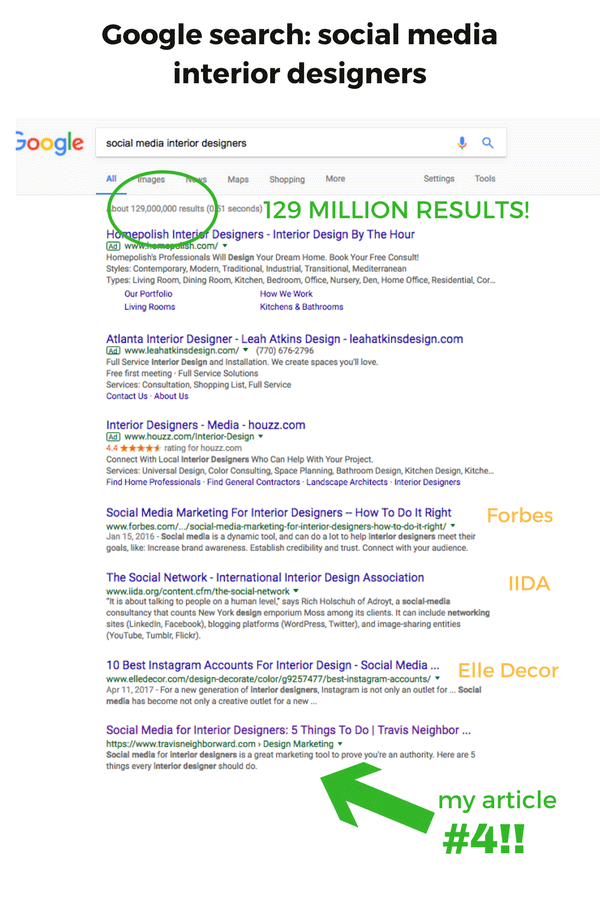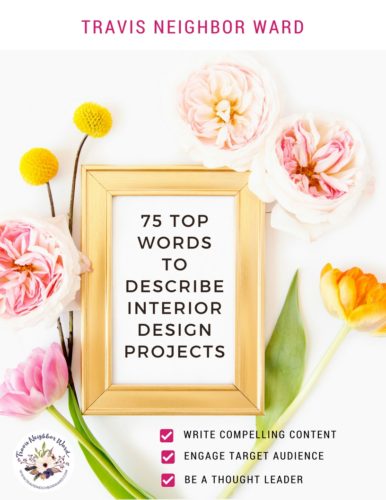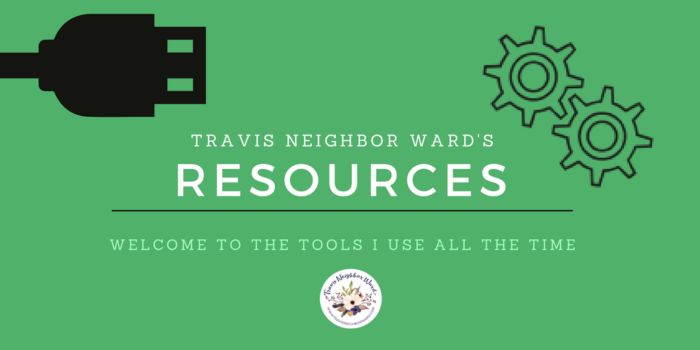I want to share with you how to create the ultimate interior design business marketing plan without spending money on advertising or PR.
Creating a plan means creating your digital platform with intention. It includes the Web and social media, among other things. I’ll get into the details soon. But for now you need to think big picture. I’m talking about getting your interior design business to rank on Page 1 of Google, like I do:


What Will an Interior Design Business Marketing Plan Do For You?
Everything you do digitally should lead to more business. You should only spend your time, energy, and money on activities that make sense for your plan.
You need to weed out any activities that are unproductive time sucks.
By creating a marketing platform (as opposed to randomly posting on the Web or social media without a plan), you’re ensuring that your efforts are going to help your business GROW.
It will get your work in front of your target audience, which can lead to better clients — and more of them.
It will help build your reputation as what I call a Very Helpful Designer, which will make magazine, Web, and TV editors turn to you for interviews and ideas.
Over time your marketing for your interior design business will build upon itself. Ultimately it will become a bulk of original content that you can repackage in the form of books and more.
Best of all, you can do all of this by yourself if you want!
Read the guidelines I’ve written for you below, and feel free to use them to jumpstart your interior design business.
Over 20+ years as a magazine editor in chief and writer, I worked with many talented and well-known interior designers. I also worked with many talented and lesser-known interior designers.
Regardless of their level of experience, I’ve seen ALL interior designers struggle with marketing.
> They struggle with knowing how to organize their marketing time and budget for their interior design business.
> They struggle with getting their interior design business, and themselves, published.
> They struggle with creating their interior design business websites, blogs, and social media pages.
> They struggle with understanding how to write and how to plan photo shoots.
Sounds familiar? Well, marketing shouldn’t be this hard — and it doesn’t have to be.
You Can Outrank Big Websites, Just Like I Do!
I’ve run my own websites for years. I design them, I do all the writing and production, I run them, and I SEO the heck out of them. I’m in charge of my own marketing platform, just like you can be.
I’ve been able to achieve my goals and rank #1 or in the Top 10 on many Google searches.
I often beat top national magazines and websites across a wide variety of topics. It takes dedication, but you can reach your marketing goals too.

When I wrote the article shown above, I wasn’t expecting to rank #4!
Now I’ve decided to tailor my successful process to interior designers because I want to see you succeed at this, too. I love helping others and I believe interior designers deserve lots of recognition.
Here’s what I’ve learned: You don’t need to own a large company to have a large online presence.
So don’t think that your content marketing efforts are wasted. If you stick with it, you’ll be recognized as the interior design authority that you already are.
What Will Your Plan Give You Personally?
You’re going to be thrilled to find out how easy it is to create a successful interior design marketing plan. And you’re going to feel deeply satisfied when you see the results.
You’ll realize that it’s really an investment in your dreams.
In this article I’m going to walk you through all the elements that go into a winning plan.
You may already have some of these elements in place, which is great. But ask yourself: Is my marketing platform the best that it can be? Most of the time interior designers can find lots of room for improvement!
Creating the marketing platform you dream of is just within reach. So keep reading to learn more…
Step #1
CREATE A FANTASTIC INTERIOR DESIGN WEBSITE
Your interior design business website should function as your content marketing hub. Content marketing is marketing that you create using content you write and produce. That can include blog posts, social media posts, videos, and more.
Your website should be a showcase of your work, like a portfolio. But it should also be a place that stimulates readers, clients, editors, and bloggers to want more from you. That means they should turn to YOU for great advice, interior design tips, quotes, and projects to publish.
Everything else you do — blogging, social media, books, videos, etc. — should tie into your website.
In my experience most interior designers know this, but they end up not doing it. The reason is they don’t know what to put on their website and how to organize it well for content marketing.
The first thing you should do is download my FREE guide to the 18 Pages Your Interior Designer Website Needs Now.
Note: Some interior designers pay Web designers to set up a website for them. Then they pay them to set up their blog. That’s fine, but it can get pricey.
I produce my website and blog by myself using free software from WordPress.org. I host it on InMotion Hosting; another great hosting option is Bluehost. I also use Squarespace.
I highly recommend this if you’re a DIY-er who likes to be in control of your platform. It gives you full control over everything, so you don’t need to pay programmers every time you want to make a change.
The other great thing about keeping your blog as part of your website is that all the content you produce helps drive traffic to your website. Search engines like Google, and readers, will love finding everything of yours in one place.
Step #2
WRITE A COMPELLING INTERIOR DESIGN BLOG
As an interior designer your blog should answer people’s questions. Those include questions about the interior design business (i.e., what they should expect when they hire a designer); about decorating (how to decorate); and about specific projects you’ve worked on. (For lots of ideas, check out my new book 550 Interior Design Blog Post Ideas.)
Your blog should include your personal reflections so they get to know you better, both as an interior designer and as a person.
The blog is a chance for you to share your knowledge, advice, and creativity.
There are many ways to blog about these things in a way that’s easy for you and satisfying for readers. One thing you should do is improve your interior design writing vocabulary. That’s why I came up with my FREE PDF 75 Top Words to Describe Interior Design Projects. You can download it and use it over and over again.
You will also need to make an editorial schedule for your blog and stick to it. This is where many designers get hung up. It’s too easy to start a blog and abandon it. Sometimes it’s hard just to think of ideas. A well-planned editorial schedule makes that easy.
Your goal is to keep blogging on a regular basis. It will get readers and editors coming to your website often. And it will generate content you can share on social media and with email subscribers. You can also re-use the content for books and videos. Plus, Google likes it when blog content is updated regularly.
Step #3
GET YOUR PROJECTS PUBLISHED
Getting published in national shelter magazines and on prominent interior design websites is the golden egg for most interior designers. That’s a great goal. But you should also aim at getting published on design blogs and smaller websites. Every bit of exposure will help boost your business.
Many interior designers don’t understand how to pitch their projects and ideas to editors. They don’t know what to say or what to include. They don’t even understand the editorial publishing process once an editor accepts their project for publication.
That’s why I created The Interior Designer’s Perfect Pitch Letter for Publishing. It’s a FREE template that you can use to write your pitches to editors. You can download it, too.
Whenever I publish interior designers’ work, I find that a few savvy designers have all the answers that I need ready to hand over. But the vast majority don’t. When you want to deal with editors, you should have project files organized specifically for publishing.
Step #4
BUILD YOUR EMAIL LIST
These days your email list is the most important tool you have for generating leads and keeping readers hooked. Your subscribers can include clients, readers, and editors. You can use email to notify them whenever you have new blog posts, books, giveaways, and more.
Many interior designers start off just accumulating email addresses and then publishing a couple of newsletters. That’s the old way of doing things. The new way is to create a network of content that you can share — and that’s what the Ultimate Interior Design Marketing Platform is.
My favorite tool for managing my email list is ConvertKit. In the past I used MailChimp, but I found it confusing and limiting for my needs. With ConvertKit I can do things like schedule email blasts, segment subscribers, create sign-up forms, tag readers, and more.
Step #5
POST OFTEN TO TARGETED SOCIAL MEDIA
I see many interior designers launch social media accounts with enthusiasm, only to abandon them after a dozen posts. It takes time to build a following, and they can’t see how it’s paying off.
But we all know that social media is essential for interior designers. Most designers get work through word of mouth, and there’s no better word of mouth online than social media.
Social media is also a great way for magazine and Web editors to discover you.
At the very least, you should have accounts with Facebook, Pinterest, Houzz, and Instagram. And by that I mean active, well-organized accounts where you post often and at the best times. LinkedIn is also useful, especially for reaching out to architects and developers.
The good news is you don’t need to sit around each day waiting to post your content. For Pinterest and Facebook you can schedule them in advance with a tool like Buffer, which I use and love.
One more thing: You don’t need to spend money on ads. I didn’t buy an ads and I got many articles to rank high on Google. But if you want to buy ads, there’s no better place than on social media. It’s affordable and highly targeted, if you learn how to do it right.
I like to advertise some of my content on Facebook and Pinterest, but only when I know it will lead me to accelerating a particular business campaign. Otherwise I post for free.
Step #6
PUBLISH YOUR BOOKS
It’s so easy nowadays to publish your own book at little cost to you. You can print books “on demand” through Amazon or other online companies. They can also distribute them for you worldwide.
Producing ebooks is even easier. I self-published two paperback novels and two ebooks. One stayed on the Amazon Top 100 paid bestseller list for 7 weeks!
The big goal for you may be producing a coffee table book of your work with a big publishing company like Rizzoli. I’ve heard that can cost around $250K.
In the meantime, you can produce your own e-books and paperbacks full of your decorating and design advice. Add some of your photos and it’s a great way to get your name out there.
Step #7
CREATE AND GIVE AWAY LEAD MAGNETS
Readers love freebies. It’s that simple. And freebies are a great way to create lead magnets that capture people’s email addresses (the big goal). So you need to produce some content that you can give away.
If you’ve written an ebook, that’s a great thing to give away. Or you could give away a free design consultation via Skype.
But an even simpler thing to give away is advice in the form of a free, downloadable PDF. The key is to make sure the PDF answers readers’ questions and looks great.
Graphic design and photography expenses shouldn’t be what stop you from making a top-notch content marketing platform. You can do a lot of it on your own at very low cost.
I make all my own PDFs and I’m not a graphic designer by training. To do it I use stock illustrations and photos that I buy at low cost, or that I get for free from the Public Domain.
Then I use CANVA to design and produce them. It’s one of my favorite online tools and it includes amazing templates you can customize. Here’s an example of a lead magnet I made using CANVA:
You can also use CANVA to design social media posts, blog posts, website headers, and many other things for your interior design business.
DOES THAT SOUND LIKE A LOT?
You can tackle it step-by-step with your plan in hand.
In today’s world content marketing is necessary and well worth it. You need to stand out. The more organized and focused you are about planning it, the sooner you’ll reap the rewards.
By building a marketing platform you’re setting up a foundation for years to come. And the more content you have out there in the universe representing your interior design business, the more chance there is that your target audience, clients, and editors will find you.
Just like your clients who deserve a beautiful and highly functional home, you deserve a beautiful and highly functional marketing platform.
Now, if you’re ready to learn even more great marketing tips from me, you’re ready to read my interior design marketing blog.
If you’re interested in hiring me to give you a customized assessment of your current marketing strategies, or help you create a marketing plan, you can contact me.

